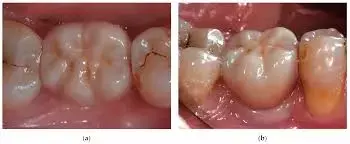- Home
- Medical news & Guidelines
- Anesthesiology
- Cardiology and CTVS
- Critical Care
- Dentistry
- Dermatology
- Diabetes and Endocrinology
- ENT
- Gastroenterology
- Medicine
- Nephrology
- Neurology
- Obstretics-Gynaecology
- Oncology
- Ophthalmology
- Orthopaedics
- Pediatrics-Neonatology
- Psychiatry
- Pulmonology
- Radiology
- Surgery
- Urology
- Laboratory Medicine
- Diet
- Nursing
- Paramedical
- Physiotherapy
- Health news
- Fact Check
- Bone Health Fact Check
- Brain Health Fact Check
- Cancer Related Fact Check
- Child Care Fact Check
- Dental and oral health fact check
- Diabetes and metabolic health fact check
- Diet and Nutrition Fact Check
- Eye and ENT Care Fact Check
- Fitness fact check
- Gut health fact check
- Heart health fact check
- Kidney health fact check
- Medical education fact check
- Men's health fact check
- Respiratory fact check
- Skin and hair care fact check
- Vaccine and Immunization fact check
- Women's health fact check
- AYUSH
- State News
- Andaman and Nicobar Islands
- Andhra Pradesh
- Arunachal Pradesh
- Assam
- Bihar
- Chandigarh
- Chattisgarh
- Dadra and Nagar Haveli
- Daman and Diu
- Delhi
- Goa
- Gujarat
- Haryana
- Himachal Pradesh
- Jammu & Kashmir
- Jharkhand
- Karnataka
- Kerala
- Ladakh
- Lakshadweep
- Madhya Pradesh
- Maharashtra
- Manipur
- Meghalaya
- Mizoram
- Nagaland
- Odisha
- Puducherry
- Punjab
- Rajasthan
- Sikkim
- Tamil Nadu
- Telangana
- Tripura
- Uttar Pradesh
- Uttrakhand
- West Bengal
- Medical Education
- Industry
Cemented restorations exhibit higher complications, bleeding on probing than Screw-retained restorations: Study

Cemented restorations exhibit higher complications, and bleeding on probing than Screw-retained restorations suggests a study published in the Clinical Oral Implants Research.
A study was done to compare marginal bone levels, biological, and technical outcomes of screw-retained versus cemented all-ceramic implant-supported zirconia-based single crowns after an observation period of 7.5 years.
Forty-four single implants in the esthetic zone in 44 patients (22 females, 22 males) were randomly assigned to two types of restorations: SR (screw-retained); veneered one-piece zirconia abutment and CR (cement-retained); veneered lithium disilicate crown intraorally cemented on a one-piece zirconia abutment.
Patients were recalled annually up to 7.5 years and survival rates, biological, and technical parameters assessed. Results: A total of 31 patients attended the 7.5-year follow-up visit (17 SR group, 14 CR group). The survival rate on the restorative level was 77.5% (74.0% CR, 81.0% SR, p = .6399). Median marginal bone loss (MBL) values yielded −0.073 mm (−0.305; 0.238) in the CR and −0.215 mm (−0.500; 0.555) in the SR group (intergroup p = .6194). Mean bleeding on probing (BoP) values were significantly in favor of group SR with 20 ± 17% compared to 40 ± 22% in group CR (p = .011).
The overall biological complication rate amounted to 27.5% (42.1% CR, 14.3% SR, p = .0775), whereas the technical complication rate was 32.5% (42.1% CR, 23.8% SR, p = .314). In total, CR restorations showed significantly more complications (84.2% for CR, 38.1% for SR, p = .0041). One-piece zirconia-based single crowns on two-piece dental implants exhibited a high rate of technical and biological complications at 7.5 years of follow-up. Cemented restorations revealed significant higher rates of bleeding on probing and total complications compared to screw-retained restorations.
Reference:
Kraus, R. D., Hjerppe, J., Naenni, N., Balmer, M., Jung, R. E., & Thoma, D. S. (2024). A 7.5-year randomized controlled clinical study comparing cemented and screw-retained one-piece zirconia-based implant-supported single crowns. Clinical Oral Implants Research, 00, 1–7. https://doi.org/10.1111/clr.14346
Dr. Shravani Dali has completed her BDS from Pravara institute of medical sciences, loni. Following which she extensively worked in the healthcare sector for 2+ years. She has been actively involved in writing blogs in field of health and wellness. Currently she is pursuing her Masters of public health-health administration from Tata institute of social sciences. She can be contacted at editorial@medicaldialogues.in.
Dr Kamal Kant Kohli-MBBS, DTCD- a chest specialist with more than 30 years of practice and a flair for writing clinical articles, Dr Kamal Kant Kohli joined Medical Dialogues as a Chief Editor of Medical News. Besides writing articles, as an editor, he proofreads and verifies all the medical content published on Medical Dialogues including those coming from journals, studies,medical conferences,guidelines etc. Email: drkohli@medicaldialogues.in. Contact no. 011-43720751


